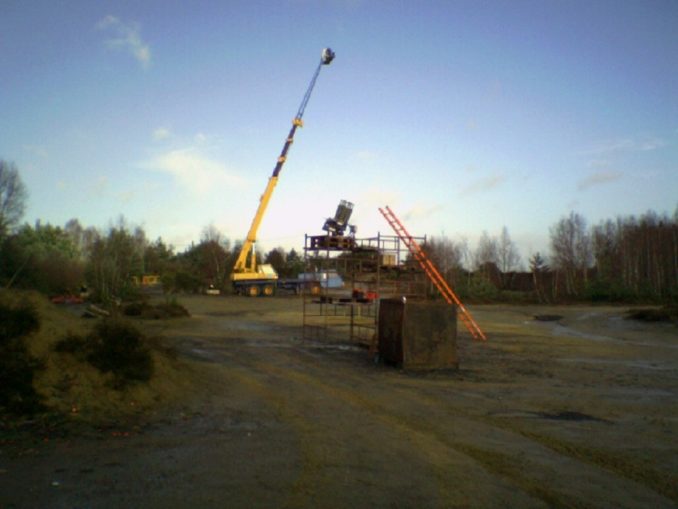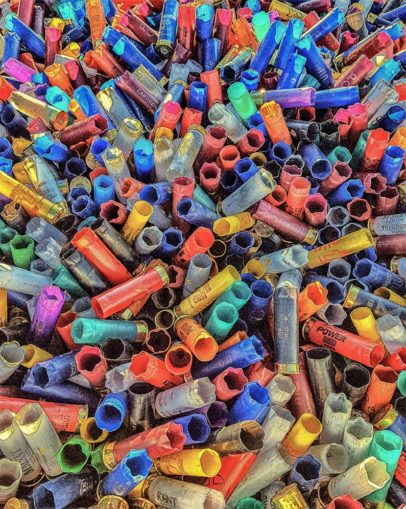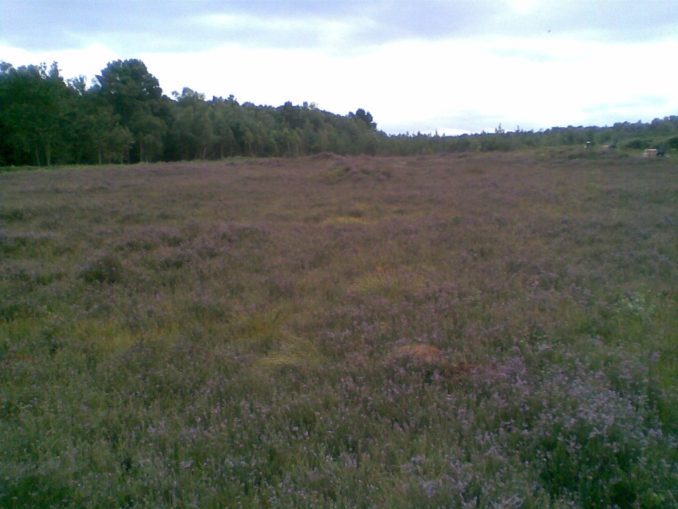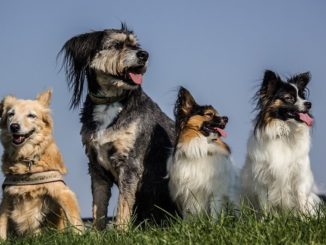In the first three parts we looked at what it takes to get into clay shooting, how to progress and where it may lead. I touched a little in each article on what goes on behind the scenes, and as this is a vital part of the whole enterprise, I though a fourth article expanding on what is entailed was worth a look. I made my living doing this for several years in my mid to late twenties, and it is still to date the best job I have had. It may not have paid well, but there were lots of side benefits, and i certainly got more out of it than I put in. This is a personal account, and by no means typical of how things are run, as each ground has its own unique circumstances, but at least it will give a little insight into what makes these places tick.

I sort of stumbled into the whole thing by accident. I was between jobs following voluntary redundancy (they made me an offer I couldn’t refuse), and I was filling my time indulging in all the hobbies I’d cast aside in favour of working for a living. I knew a few people in the game (as shooting is a pretty incestuous pastime), and it was via one of them that I found out that a role was up for grabs that I might be interested in. A quick phone call later, and I was very soon being shown round the place that was to become the centre of my life, both social and working for the next few years, But it wasn’t my first time there, for many years before, this was the place I had been sent to on Sunday mornings to have my raw ability honed into a usable skill in exchange for trapping and odd jobs.
Thankfully there were still a few people there who remembered me, although by that time the place had changed hands at least twice. It was the new sole owner (formally the business sleeping partner) who I had come to see, and he was overflowing with excitement about the possibilities the place had to offer now he had complete control. It had become very run down since I had last visited, and an injection of hard work, ideas and money (mostly money) was needed to restore this once great venue to its former glory. I was sold from the minute I met ‘The Boss’, the man who was to become my very good friend. His determination and good humour were infectious, and as a born leader he inspired the kind of confidence I needed to propel myself back into the world of work. I didn’t need long to think about it, I accepted the offer of a job there and then, and from the following Monday, I was to become the third of a trio of new Groundsmen, the first step in a resurrection and rejuvenation plan that was many years in the making.
An easy introduction was not in the cards, and the hard work started almost immediately. My co-workers or as they quickly became, my partners in crime were Stu and Mike. Stu had just come out of the army after ten years and as the oldest was nominally in charge of the outside staff. Mike was fresh out of college and very rough around the edges. He became like a little brother, and Stu was like a crazy uncle. Lucky for me, we all got on without too much hassle, and very soon became a team of sorts. Stu had already been there for a couple of months and was the only one of us to work with our predecessor, a grumpy old man known as Chalky, but as I had previous experience in this sector and was a shooter myself, Stu often deferred to me for ideas as we looked to improve the way things were run, and it was more often than not me who went to The Boss or the Shooting Manager and they in turn used to come to me.
Day to day tasks mainly revolved around the maintenance of the equipment, upkeep of the grounds and supporting the instruction team when required. The most important thing on any ground is to keep the traps working, which meant refilling the trap carousels with clays when required, checking and changing batteries, and doing any repairs. For machines that spent their entire working life outside in all weathers, the traps we used were surprisingly reliable and very few required any major work. The most common problems were electrical issues usually caused by water ingress, or wear and tear on the motors and gearing. In colder weather, they would often need to be deiced in order for them to be at their best, and in summer the only thing that needed to be done was to keep the vegetation away. Batteries were changed as required, and we generally used 110 amp hour leisure batteries which were good for a week of normal use. They were charged in a huge well ventilated container on trickle chargers, and at any one time we would have around 300 or so, and each was stamped with a date and number when new, and once they got to 100 cycles, would be replaced and recycled by our local scrap merchant.
Most grounds have high towers, and these can be fixed scaffold or tubular steel masts, or mobile like cherry pickers or Scissor lifts. We had a mixture of both on site, with two freestanding scaffolds, one 50ft and one 80ft, two cherry pickers, a decrepit old Sanderson telehandler and two Cosmos all terrain cranes, one with a 50m boom and 20m jib, and one with a 40m boom. These appliances coupled with the sheer amount of land (with both natural and man-made topography) we had at our disposal meant that we could show any presentation imaginable, and at greater heights than any other ground in Europe (at the time), so lots of high bird shooters would come from all over the world to use our facilities. All of these required maintenance and training to use, so each of us was sent on the relevant courses. Mike was a dab hand with anything mechanical, so he did a lot of the servicing and repairs, whilst Stu and I did all the driving/operation and this worked well. By good fortune, one of the regular instructors was a scaffolder by trade, so he looked after the towers.

Being a farmers son, I am no stranger to tractors, and our ground had two, a compact Kubota for mowing, and a larger International which ran things like a log splitter, sweeper and a flail for hedge cutting. These two and the 7 ton 360 excavator we used for all sorts of things were my babies, and my excavator ticket is still a good source of income to this day, and I am thankful for that. Keeping the grounds tidy was a herculean task, even for three of us, and during the summer around 75% of our time was spent strimming, cutting and landscaping. When we first took over, the whole estate was run down and very untidy, and it took over a year to get on top of it. Some shooting schools care more than others about the aesthetics of the grounds, but as we were aiming for excellence, there was no expense spared, and we were forever undertaking little improvement projects. This was where Stu, and his successor Dave* came in handy, as both had a knack for hard landscaping and between them really did a fantastic job of upgrading the ambiance over the years. The ground was always closed on a Monday, so this was the day any serious jobs got taken care of, as the golden rule of the groundstaff was to be as inconspicuous as possible. Monday was when we did any dirty work, such as having a fire or sweeping up clay debris.
Special projects were usually undertaken in the winter when things were quieter on the grounds. Although we were open 6 days a week, corporate and group bookings dried up as the weather worsened, and often from November onwards we would only have one or two instructors out on the grounds at a time. We did allsorts over the years from laying a new access road, to draining a boggy corner, to reroofing the clubhouse. We used to have a few regular experts come in to lend a hand from time, and one I particularly got on with was a tree surgeon called Nick. As the lodge had two big open fires which were lit daily for 6 months of the year, we always needed a steady supply of firewood, and luckily the grounds were a rich source. Turns out I was a natural with a chainsaw, and I actually ended up working for him on my days off and when I eventually left the shooting ground he set me up with my next job. I owe him a lot, and the skills he taught me (and the courses my employer paid for) now mean I will never be short of work.
On occasion we would have big events on with hundreds of attendees, sometimes this would be a national or international competition, other times a corporate or charity function. Preparation time for these could run to months, with loads going on behind the scenes in the build-up. Out on the grounds, we didn’t need to do anything too major, and we would often be ready well in advance and so able to help out in other areas. Extra batteries would be charged and distributed around the ground, along with extra stacks of clays. On some busy days, you might have to refill the carousels three or four times, so up to 1000 clays might be fired from a single trap. Multiply that by 100 or so traps, and that’s quite a few for a days work. Some traps were not accessible while the ground was ‘live’ so every employee out on the ground had a radio, enabling us to stop the shooting if we needed to, but also to allow the instructors to tell us if they had a problem. We were well drilled, and kept disruption to a minimum, unless there was a catastrophic failure with a piece of equipment, such as the time the casting of a trap sheared or when one of the cranes wouldn’t start. In these circumstances, we always had a plan B, and while one of us got out the manual and hand trapped the stand, the others would be working around the problem.
Busy grounds require lots of consumables, such as clays and cartridges. Ours was the busiest, so we had fortnightly deliveries of both. Straight from the manufacturer, we would get between ten and twenty thousand cartridges which had to be counted in and hand stacked in the armoury, and two or three pallets of clays, each containing around fifty boxes or ten thousand clays. These were stored in a 40ft container and were loaded and unloaded with the telehandler. We always had a brew and a bacon sarnie ready for the drivers who were regulars, and they in turn used to bring us freebees from the company like branded hats and T shirts. Monday was rubbish day, and we would tour the grounds with the tractor and trailer, collecting all the bins and then taking them up to the lodge, emptying all the rubbish into the two enormous wheelie bins before pressure washing each bin. We would normally wash any vehicles the customers might see at the same time, such as the golf buggies we kept for less abled clients and The Bosses car.

“Empty Shotgun Cartridges on a Clay Shooting Range.” by gizmo-the-bandit is licensed under CC BY 2.0
The Shooting Manager liked to freshen up the course on a monthly basis, and with thirty stands and over a hundred traps, that meant a lot of moving around of equipment. Some only needed slight tweaks, but others would often require hours of setting up, particularly if he had something special in mind. I used to help him a lot in this, as he would often get me to shoot each new target to gauge its suitability, and it would sometimes need to be altered several times before he was satisfied. Some stands never changed, and we would have bunkers near them where we would stash a whole pallet of clays and spare batteries, so they required minimal attention. Special layouts for competitions would require the hiring in of extra traps, and we had an agreement with a neighbouring school that they would provide us with their equipment and services when required. None of us liked this, as it meant outsiders on our turf, and they invariably did things differently to us, so we tried our best to keep the two enterprises separate,
The school had something in the region of 60 guns of various types and calibres. The vast majority of them were Beretta 686 Silver Pigeons, one of the best pound for pound guns on the market (although not my favourite), and The Boss had a good relationship with GMK the importer, so always got good deals when we restocked. The Shooting Manager was responsible for all the servicing and repairs on the guns, and as we shared our carpark with a gunsmith, things could always be remedied fairly quickly. School guns took a lot of punishment, with the 12 bores firing upwards of 50000 cartridges each, every year, and most would be expected to make seven figures before retirement. Any guns used were always cleaned and stacked the end of the day, and this regular care went a long way in prolonging their lifespan. I myself still own one of the ‘retired’ club guns which I use for my occasional bouts of coaching, and it is one of the most reliable pieces of machinery I have ever known.
A typical day on the grounds would start with a look in the client book, so we could estimate the amount of cartridges and any guns needed to be taken onto the range. These would be stored in the lodge, and later some cartridges would be left at drop off points around the grounds so the instructors didn’t need to carry too many from the off. We would then unlock the gates, the lodge and the compound where the vehicles were kept. The groundstaff would then busy themselves checking traps were working, fully stacked and batteries were good, before we would all head back to the clubhouse for a brew and a catch up with The Boss to see if he had any special tasks for us. Mike would spend most of the day tinkering with the vehicles or broken traps, whilst I would normally split and stack wood, or if it was summer, be strimming or grass cutting. Stu/Dave liked to patrol the grounds and interact with the clients and instructors. Lunch was always 12:30 to 13:30, when the ground shut down for an hour, and the rest of the day would be spent topping up traps. After the last client was gone, we would collect the guns and any leftover cartridges, scout around for stragglers or trespassers (this happened far too often), before locking up and returning to the clubhouse, cleaning the guns and returning them to the armoury. Very often all the staff would then go to the bar and have a drink or two to relax, particularly after a busy or hot day. The Boss was very keen on us socialising together as a team, and we all got on pretty well.

It was never a 9-5 job and that was part of the appeal. There was always something different to do, and you didn’t mind coming in early or staying a bit later to get something done. The Boss noticed, and he always rewarded you for it. I met some amazing people, some famous people, and a lot of ordinary people, but each was treated with the same level of courtesy and respect, and I think that’s why we were so successful. We never felt under pressure, despite it being very hectic from time to time, and I think that’s mostly down to the relaxed atmosphere perpetrated by The Boss, and the quality of my workmates. I was very lucky to call that place home for 5 years, and I still miss it to this day.
*You will hear more about Dave and what happened to Stu in the next installment.
© Columba Palumbus 2021
The Goodnight Vienna Audio file
Audio Player



